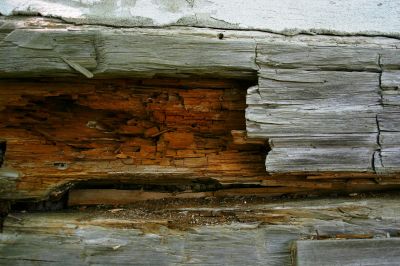Favorite Products for Wood Rot Treatment and Repair Solutions
Identify essential products trusted by experts to effectively treat and repair wood affected by rot and deterioration.
 Addressing wood rot effectively requires a comprehensive understanding of the materials and repair techniques involved. When dealing with wood rot, it is essential to identify the extent of decay and select appropriate products that can restore structural integrity while preventing further deterioration. Various repair products are available, each designed to serve specific purposes, such as filling, sealing, or reinforcing compromised wood. Proper application ensures longevity and safety for the repaired structures, whether they are part of a home, deck, or outdoor furniture.
Addressing wood rot effectively requires a comprehensive understanding of the materials and repair techniques involved. When dealing with wood rot, it is essential to identify the extent of decay and select appropriate products that can restore structural integrity while preventing further deterioration. Various repair products are available, each designed to serve specific purposes, such as filling, sealing, or reinforcing compromised wood. Proper application ensures longevity and safety for the repaired structures, whether they are part of a home, deck, or outdoor furniture.
Top Overall Option
Liquid Wood Consolidant and Repair Kit
A versatile liquid consolidant designed to penetrate decayed wood, strengthening and stabilizing it from within. This product often includes fillers and sealants that can be used to rebuild and protect affected areas, making it suitable for a variety of wood rot repair needs. When applied correctly, it helps restore the integrity of compromised wood and prepares it for finishing or further treatment.
Types of Products For Wood Rot Repair Service
Epoxy Wood Filler
A two-part epoxy designed to fill and rebuild decayed or damaged wood surfaces, providing a durable and paintable finish.
Wood Hardener
A penetrating solution that stabilizes soft or rotted wood, making it easier to work with and more resistant to further decay.
Wood Repair Putty
A ready-mixed putty used for filling small holes, cracks, or surface imperfections caused by wood rot.
Liquid Wood Consolidant
A penetrating liquid that consolidates and strengthens decayed wood from within, often used as a base treatment.
Sealant and Primer
Surface sealants that prepare repaired wood for painting or finishing, sealing porous or treated surfaces.
Wood Preservative
Chemical solutions that help prevent future wood rot and insect damage when applied to vulnerable wood surfaces.
Rot Repair Patches
Pre-cut patches or sheets made of durable materials to cover and reinforce larger areas of damaged wood.
Sanding Tools
Tools such as sanders and abrasive pads used to smooth repaired surfaces before finishing.
Caulking and Sealant Guns
Tools to apply sealants and fillers precisely into cracks and joints affected by rot.
Wood Restoration Brushes
Specialized brushes designed for applying consolidants, sealants, or preservatives evenly over surfaces.
Moisture Meter
A device to assess moisture levels in wood, helping determine the severity of rot and effectiveness of repairs.
Protective Coatings
Weatherproofing paints or stains that safeguard repaired wood from future moisture intrusion.
Popular Choices
Widely used for restoring damaged wood surfaces, offering strong adhesion and durability.
Commonly applied to stabilize soft or rotted wood before filling or sealing.
Popular for deep penetration and strengthening decayed wood from within.
Frequently chosen for quick fixes and small repairs on wood surfaces.
Essential for preparing repaired areas for finishing and protecting against moisture.
Effective for covering larger damaged areas with a durable overlay.
Commonly used to evaluate moisture content before and after repairs.
Popular for extending the lifespan of wood after repair by sealing out moisture.
Frequently used to achieve a smooth surface before finishing.
Widely employed for precise application of fillers and sealants.
Choosing the right products involves considering the type of wood, the severity of rot, and the environmental conditions. Repair solutions range from liquid wood consolidants that penetrate and strengthen decayed wood, to epoxy fillers that restore shape and strength. Surface sealants and primers can also be used to prepare the wood for further treatment or finishing. It is advisable to follow manufacturer instructions carefully to achieve the best results and ensure the durability of the repair.
In addition to the repair products themselves, tools such as brushes, putty knives, and sanders are often necessary to facilitate proper application and finishing. Proper surface preparation, including cleaning and removing loose or decayed material, enhances the effectiveness of the repair products. Regular maintenance and inspection after initial repairs can help prevent future wood rot issues, extending the lifespan of wooden structures and reducing the need for costly replacements.
Overall, selecting the right combination of products and techniques is crucial for effective wood rot repair. Whether dealing with minor surface decay or more extensive damage, a range of specialized products is available to address different levels of wood deterioration. Investing in quality repair materials and proper application methods can help maintain the safety, appearance, and structural integrity of wooden elements over time.
Key Buying Considerations
- Assess the extent of wood decay to select appropriate repair products.
- Determine whether the product is suitable for indoor or outdoor use.
- Check if the product is compatible with the type of wood being repaired.
- Consider the ease of application and required tools or accessories.
- Evaluate the drying or curing time to fit project timelines.
- Look for products that provide good adhesion and bonding strength.
- Ensure the product offers effective moisture resistance to prevent future rot.
- Select repair materials that can be painted or finished over if desired.
- Review safety instructions and handling precautions before use.
- Consider the longevity and durability of the repair solutions.
- Check for compatibility with existing finishes or treatments on the wood.
- Identify whether the product can be used for both small repairs and larger restoration projects.
- Look for clear instructions and manufacturer support for best results.
- Evaluate the environmental conditions where the repair will be applied to ensure suitability.
